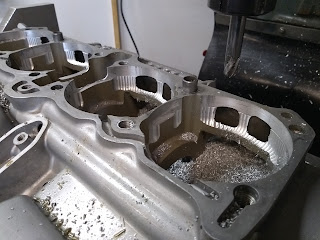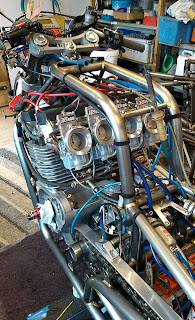I'm going to try and condense the next 12 months progress into one post!
With the decisions made as to the bikes configuration, it was time to move on to how I was going to actually make it. The engine being the main area of concern as I’ve not build an engine before, chassis - sure that’s a known quantity but crankcases and cylinder heads - from scratch, they are firmly in the realm of the great unknown.
Options considered were:
1) Pay someone else to do it (total consideration time 0.4seconds)
2) Make it from billet Aluminium - it's all the rage these days with the era of affordable CNC machinery, but I don't have one, don't know how to program one, and I don't have a business to justify buying one or an interest is starting one. That said, it's no problem to machine a billet manually but, as an inexperienced machinist it's risky to work on large billets due to the high cost of buying them and the chances of messing them up (High)
3) Sand cast Aluminium - It turns out casting is very affordable, a set of cases is less than a 1/4 the price of a billet, even after heat treatment. It's a lot less machining to do afterwards and easier to machine too. Plus - seeing as how a great number of the top fuel bikes in existence use Puma cast cases I figured this was the right way to go.
So off I went on a research trip into pattern making and sand casting, I visited foundries and spoke to anyone with experience for advice. I was really lucky to be given a large disc sander and small bandsaw early on - these proved to be invaluable later.
The first patterns I made using MDF - I hate the stuff but it's accurate, flat and easy to work with. Building it up in layers of varying thicknesses to get what you want. It does however need a lot of layers of paint afterwards to seal them. Crankcase patterns took 3 attempts to get to an acceptable state. Looking at them 3 years on I’d bin em!
I had two sets of crankcases cast, and they turned out ok. A little bit of porosity in one but the other was good. Virtually all the machining was done on the mill, using a set of dedicated jig plates. Line boring them took many many attempts before acceptable results were acheived. The crank design uses large roller bearings on the outside and double plain shell bearings in the centre.

























